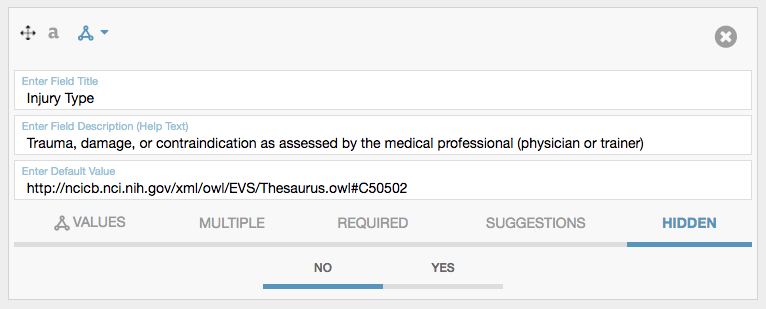Now we're talking! CEDAR added two significant features this month, and other work 'under the covers'.
Big (Visible) Features in This Release: Spreadsheets and Better Fields
Spreadsheets at Last

One of our most-requested features is spreadsheet support. We have taken the first step toward this goal, releasing a spreadsheet-based display of multi-instance fields and elements. If you create an element that supports MULTIPLE entries, then as long as your element's fields are all at the top level, you can use a single spreadsheet to edit all the all the fields in all the entries! The spreadsheet capability has rich features, including copy, paste, and full screen view, so you can easily manage whole big whompin' tables of metadata in one large view.
This is our first draft of the spreadsheet capability, so there will likely be some bugs, and definitely things we can improve! Please provide feedback about what you'd like to see.
Updates to Fields: DEFAULT and HIDDEN (but no more VALUE TYPE)
CEDAR now supports default values and hidden values for text fields in forms. If you want to specify a default value, just enter it using the DEFAULT tab for the field. If you want to encode a value in your metadata instances but not bother metadata providers, you can set the default value, and select the HIDDEN option. Your metadata will be encoded in all the instances created from that template, but will not be visible in the user interface. (Of course, it will be visible in the JSON-LD, which is the point of this feature.)
We also changed the semantics you can use with fields. Until now you could declare the value type of your field, which seemed a cool way to describe the field. Unfortunately, there was no meaningful RDF representation for "This *field* is described by this concept", so we've had to remove this feature until we can devise a real RDF representation. You can still define the semantics of your fields and elements) using the Property value (RDF icon at the top of the field or element), which requires a corresponding Property concept. We'll bring back the field description term as soon as we can.
Other Valuable Stuff: Docker and Submission Pipelines
The CEDAR Workbench can now be deployed fully with Docker, including all CEDAR features. We are still making a few final tweaks, so please contact us before running off and deploying it (bad things could happen!). We'll have this in final form for you to use soon.
We continued work on our metadata submission pipelines with ImmPort, AIRR and LINCS groups, with CEDAR components talking to respective repositories (ImmPort testing system, NCBI, and LINCS DCIC). Major internal milestones including coupling the LINCS and CEDAR KeyCloak authentication servers, so that LINCS users can get passed to CEDAR with no additional login required; and creating our first (basic) submissions into the ImmPort testing system. Plenty more work to do before our site visit in August, but we're looking forward to the challenge!
Please visit the CEDAR release notes for more details about CEDAR releases.

